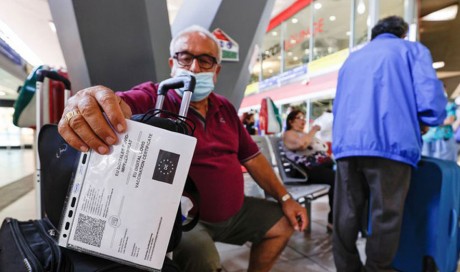“It is also worth noting that in most of these states the radical right is, to varying degrees, entrenched as a political force and is looking to mobilize this angst over Islam into the ballot box, either at elections in 2017 or longer term,” the report said.
Support for stopping immigration isn’t restricted to the far right, the study pointed out. The Netherlands, France and Germany face elections this year, and their once-shunned far-right parties are expecting to make important gains.
“There is also some evidence that public opposition crosses political boundaries, with three-quarters of those who self-classify themselves as on the right of the political spectrum and more than a third of those on the left supporting a halt,” it said.
Another major survey, released by the Paris-based Ipsos polling institute just before Christmas, hinted at one strong reason why concern may be so widespread. In every European country polled, voters think the Muslim populations in their countries are much higher than they really are. The gap between fact and fear can be enormous.
In France, home to Europe’s largest Muslim minority, voters estimated 31 percent of the population belonged to the Islamic faith. In reality, only 7.5 percent do. In Italy, they account for 3.7 percent of the population, but voters there guessed their proportion at 20 percent.
Germany, Belgium, Sweden and the Netherlands showed equally high overestimates.
Even countries with almost no Muslims got their guesstimates wrong. Poland and Hungary both have less than 0.1 percent Muslims in their populations, but their voters guessed they had 7 percent and 6 percent respectively.
North American readers shouldn’t think this is a particularly European myopia. According to Ipsos, the U.S. population is 1 percent Muslim, but respondents there estimated it at 17 percent. Canadians also guessed their Muslim population at 17 percent, while the actual figure there is 3.2 percent.
The Ipsos poll showed Europeans also vastly overestimated future growth of their Muslim populations, with all of them expecting rapid rises in their numbers in the next few years.
“Does Europe fear Muslims more than the United States?” asked John Lloyd, a contributing editor to London’s Financial Times, in an analysis.
“The more urgent question is whether those who support a ban on travel and immigration from Muslim-majority countries will lead nationalist parties to victory,” he said.
“To describe the new far-right parties in Europe as ‘populist’ is to categorize them as outside the pale of mainstream, liberal politics: to admit that they are popular is harder.
“But they – or at least their policies – are. The dark night of fascism has not fallen on America, nor on Europe, and isn’t likely to, but fear and rejection of immigration haunts both. In 2017 Europe will show, in the Dutch, French and German elections, how dark the night can be.”
Share This Post














